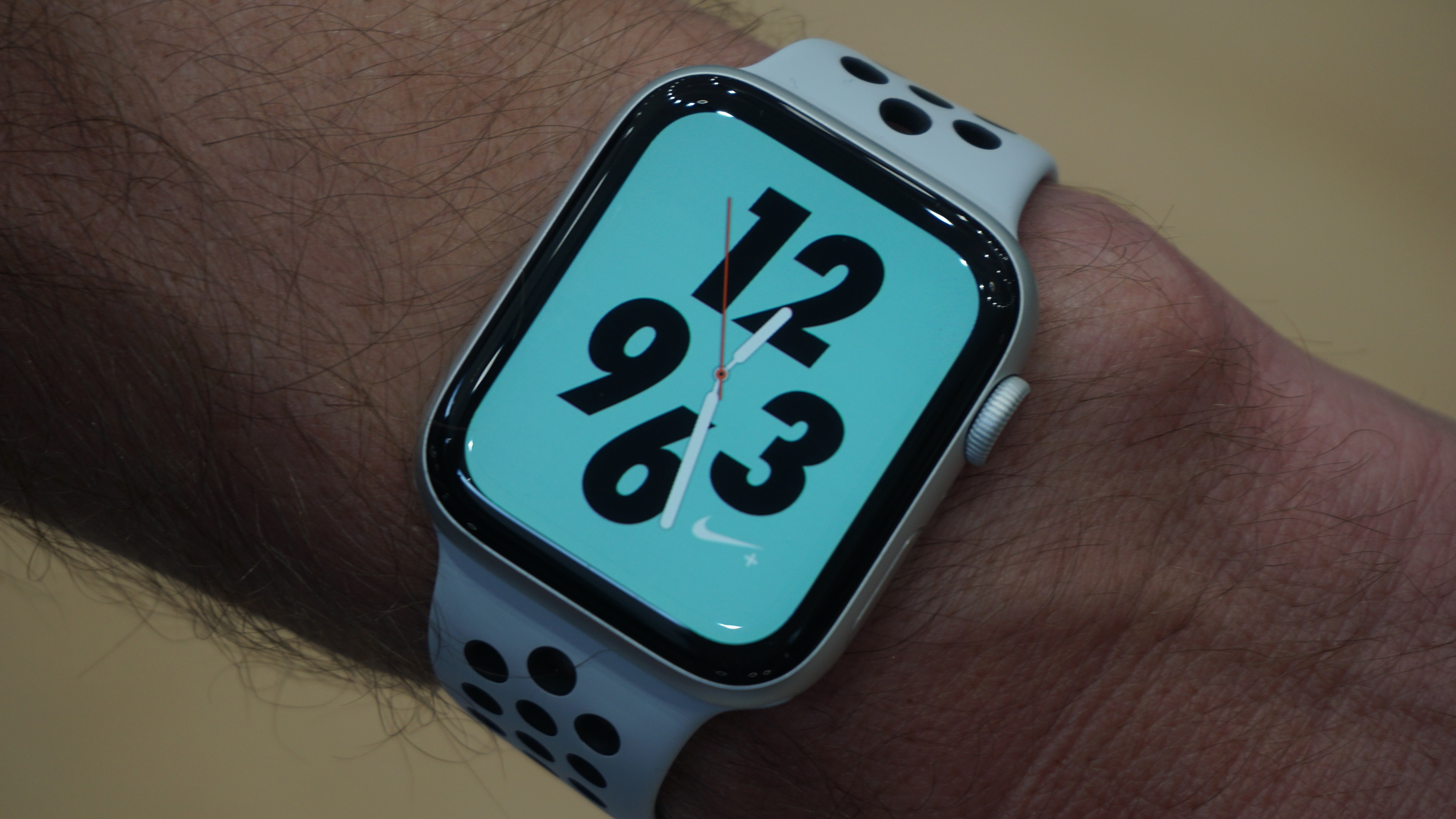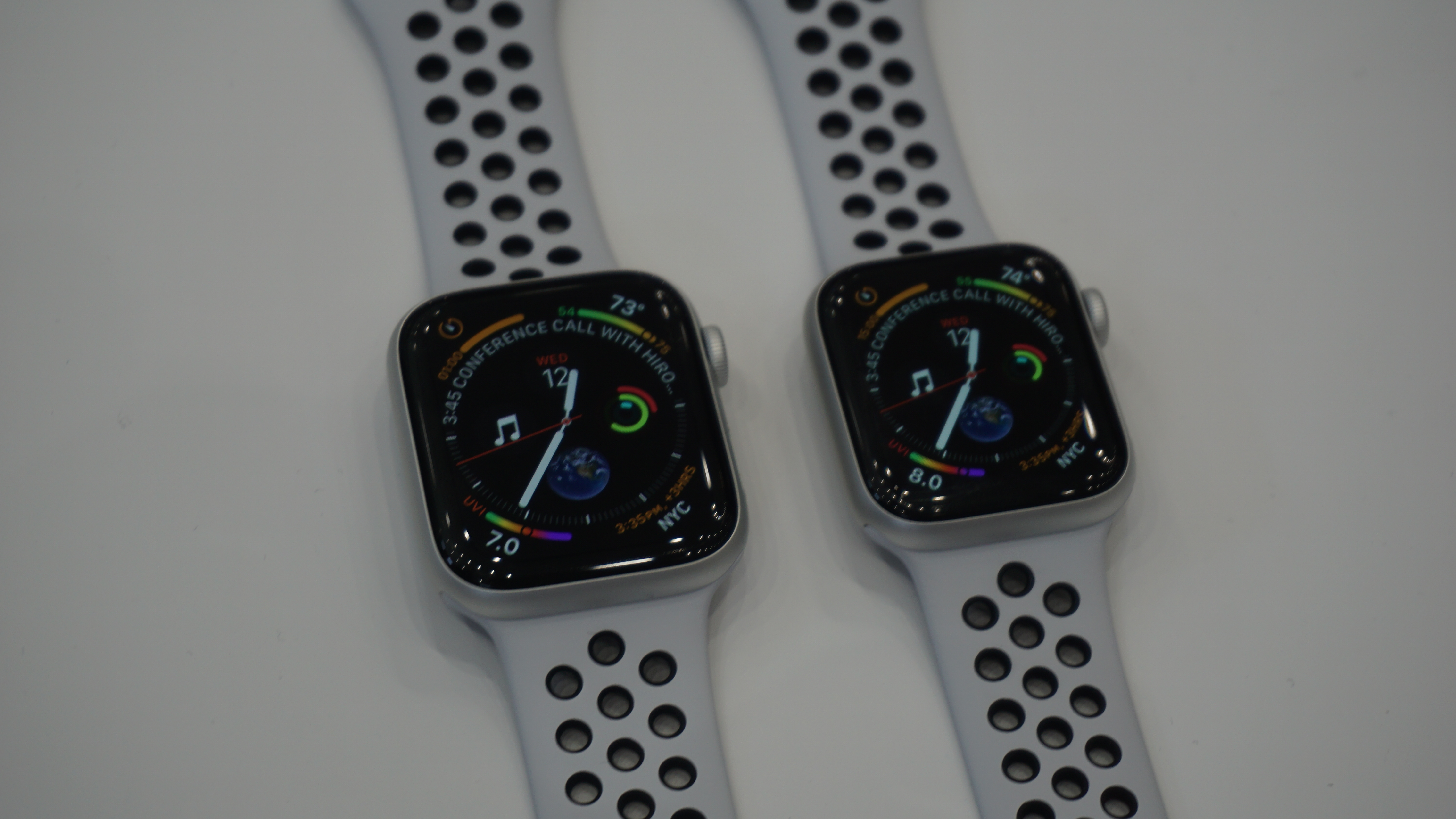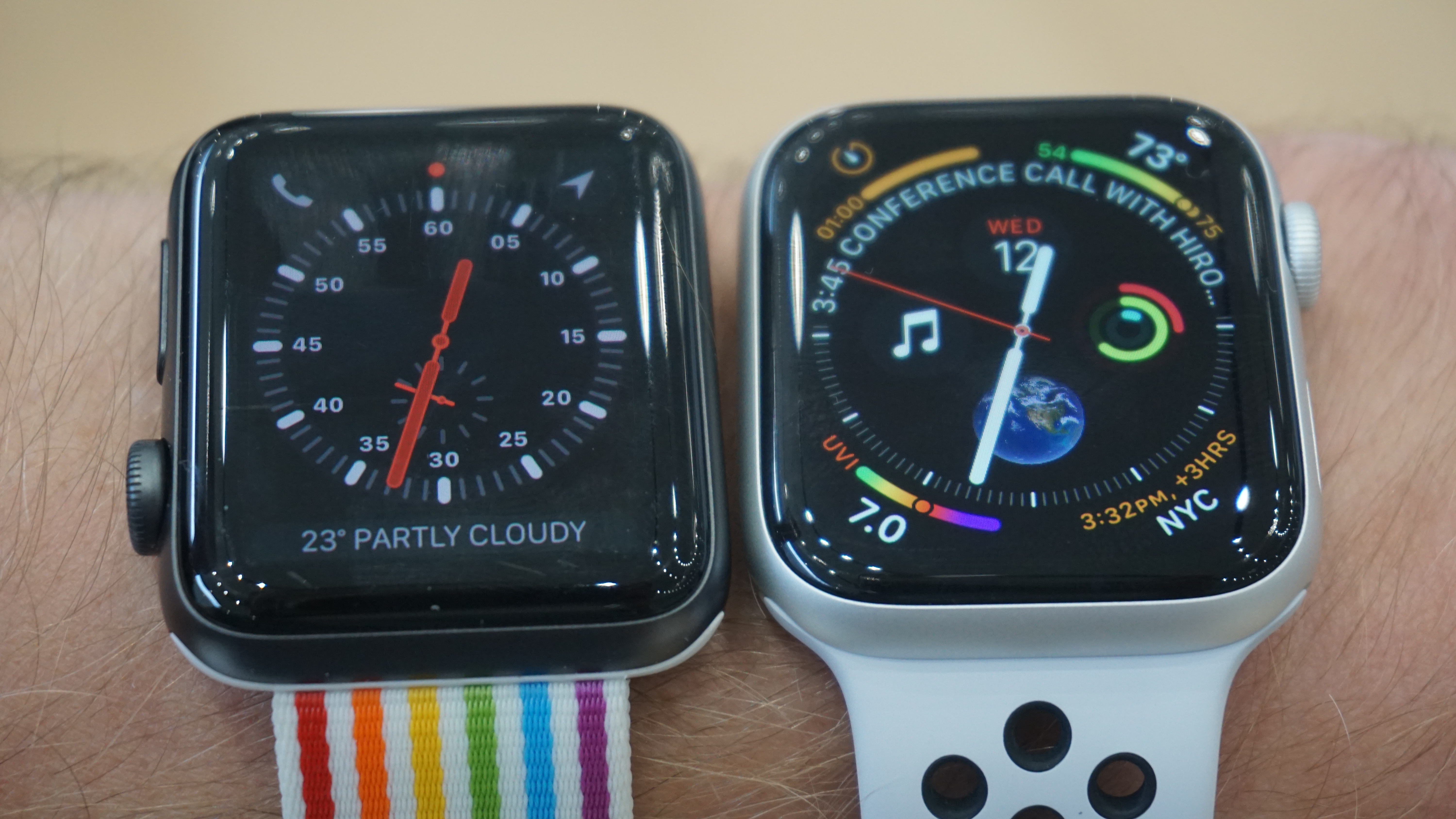Apple Watch 4
These are our early impressions of the new device from Apple - check back in a few hours (or keep an eye on our Twitter feed) to see when we've had time to deliver some more in-depth findings.
The Apple Watch 4 is something that both smartwatch and fitness enthusiasts will have been hankering after since the launch in 2014.
Finally, we’re getting a design upgrade that makes moving to the latest model worthwhile - we’ve been forced to look at the same shape and screen for each subsequent model, with only modest changes. Honestly, if you’re a fan of the Apple Watch at all and thinking it’s time to jump - now is the time to do it.
The Apple Watch 3 recently lost its title of best smartwatch in our rankings to the Samsung Galaxy Watch - so what can the Watch 4 (or Apple Watch Series 4, to give its full title) bring that might propel it back to the top of the charts?
Apple Watch 4 price and release date

The Apple Watch 4 is coming in four variants: 40mm and 44mm styles, and with or without LTE.
In terms of the Apple Watch 4 release date, we’re looking at September 14 for the pre-order, but September 21 if you want to actually get thing on your wrist.
The GPS-only version will be $399 / £399 / AU$599 for the smallest version, launching in 26 territories, and cellular option will be $499 / £499 / AU$749 in 16 markets. We’ll update this with more pricing as we get it.
Design and screen

If you asked most people what upgrade they’d like on their Apple Watch, most would say that they’d either like it to be round, or to have a large display. Well, they’re not going to get the former, no matter how many patents Apple holds, but the latter has come to pass.
The design of the Apple Watch 4 is much like many would expect - it’s based on the previous four models (the first Watch was retooled and re-released, remember), but now is ever so slightly larger, as you can see in our side-by-side pictures.

That means you’re getting a rectangular OLED display that’s flanked by rounded edges, curving away and towards the wrist.
The same quick (ish) release straps are back - it would be something of a surprise if they disappeared given the Watch band ecosystem Apple has built up around them - and the heart rate monitor is present at the back of the device (and more on that later).
The digital crown, the spinning dial that allows you to flick through lists and press ‘enter’ when clicked in, is back (with a red-ringed version marking that the Watch 4 has LTE connectivity inside) and above / below that (depending on which wrist you have the device on) is the power / multi-tasking button.
The crown is now haptic, and it’s got a really nice click to it as you spin - it gives a really lovely feel as you’re using it to go through the Watch 4 and feels far more like a mechanical device.
Everything feels polished, well-made and light enough on the wrist. The rear of the Watch is even ceramic and sapphire to add that little bit of glitz to proceedings and make sure that cellular signal can get through well - and it’s really visually striking when you see it for the first time.
But let’s get onto that screen! A new thing! A visual change to the Apple Watch, finally!

The change here is the screen has been shoved to the edges of the Watch, so no more ugly black bezels around the sides of what you’re looking at.
Saying that, many apps used a black background already so it was quite hard to see the border, but with the larger screen you can see so much more information.
Apple has used this to good effect, allowing more complications on the watch faces so you can see more information at a glance - it’ll be interesting to see how long other apps are re-tooled to catch up and make properly good use of the display’s extra space.
The Apple Watch 4 is still using the same OLED technology as before, and still doesn’t have that ‘always-on’ display that many will be craving - you still need to raise your wrist to wake it, and while we couldn’t test this in multiple scenarios in the demo area (like sitting, standing, lying in bed etc) in the past the reaction to a raise has always been pretty good from Apple’s wristwear.
It’s strong, dynamic and colorful and the new Watch faces really add to the mix. There’s so much more you can do to accessorise it, and while it doesn’t look any brighter it really impresses the eye just from being larger.
Fitness

The Apple Watch has been increasing in prowess as a fitness device over the years, bringing in ever-more sophisticated tracking for your runs and cycles, connecting to separate gym equipment and monitoring you through more activities.
That range is still on offer here, but has been augmented in a couple of ways. The main one is the improved heart rate monitor, which won’t be of much attraction to many.
There are plenty of people out there that do want more medical insights though, and that’s where Apple is aiming this device. We know someone with diabetes and if the Apple Watch ever became capable of monitoring blood glucose, he’d buy it straight away.
The Apple Watch 4 has an improved monitor for checking how your ticker is beating, using an ECG (electrocardiogram) monitor to give better readings in a medical scenario. It’s still not certified as a medical device, of course, but it can give better notifications of things that you might want to get checked out.
We couldn’t test that just yet - the feature isn’t coming to the US for a month or two, and the rest of the world later - so the basic heart rate monitor looked, well, basic.
The overall functionality of the heart rate monitor, when just generally exercising, should also be improved - this is very much welcome for athletes, as the Apple Watch has never been the best at reading your pulse when being bashed about during exercise.
Battery

The battery life of the Apple Watch 4 is improved once more, thanks to the presence of the new S4 chipset inside, creating more efficiency and (presumably) Apple finding a way to cram a little more battery into the space through miniaturised components.
Apple now claims that its Watch 4 battery life is staying strong at 18 hours for ‘all-day’, which is a bit of a disappointment and keeps it behind the same levels claimed by others like Samsung or more dedicated running devices.
However, for some reason, Apple seems to underplay its battery life - when it first claimed 18 hours on a single charge, we found it would last a little longer. Plus you can now go for 6 hours on the GPS, which is going to make it applicable to more marathon runners.
However, with a more impressive heart rate monitor in the mix and the presence of GPS for tracking on the go, there’s a lot for this watch to do along with a connection to the phone to show notifications.
The charging set up is the same as before: you’ve got the wireless, but magnetically-connected, charger that clips onto the back of the Watch 4 - this is a pretty strong link despite using magnets, so you’ll rarely knock the watch off it during the night.
Early verdict

The Apple Watch does bring some upgrades, but the biggest and most important is to that display. Finding a way to put more information on the display is a key skill here, and is going to entice more users by bringing more information from the wrist.
It’s good that Apple’s managed to retain the form factor while making the screen bigger, and the mix of the fitness and more medically-aimed features will broaden the attraction of owning an Apple Watch.
The lack of dedicated apps - brands aren’t exactly rushing to put their wares onto the Watch, and some older apps are being discontinued - but as a standalone device Apple had definitely improved its wristwear in 2018.
0 comments:
Post a Comment